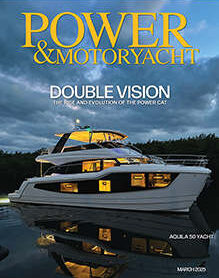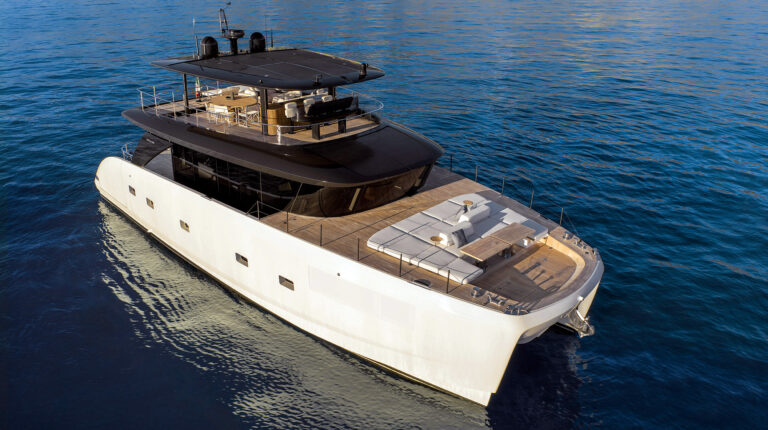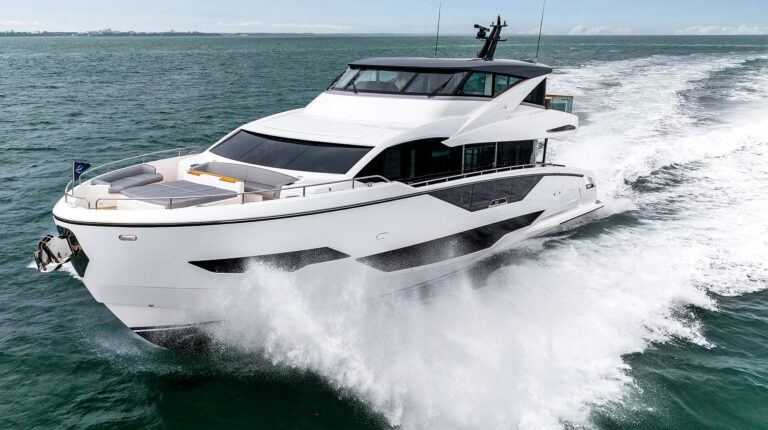
Illustrations by Scott Bakal
You thought getting the cash was the hard part and the rest would be easy, and maybe fun, too. But even with eight digits worth of mad money in your treasure chest, building a custom megayacht is a voyage littered with hazards. Running afoul of any of them could be costly in money, time, or ulcer-inducing stress—maybe all three. To help calm the seas, we asked three megayacht-building experts for advice.
Jim Eden is a new-construction expert at the brokerage firm International Yacht Collection. Since his first custom build in the early 1970’s, Eden has completed 82 projects and is still going strong. Michael Joyce is president and CEO of Hargrave Custom Yachts and has been a force in the custom-yacht industry for nearly 40 years. Jim Bronstien joined Rybovich Spencer in 1984 and ended up owner of the company. After selling it last year, he joined Broward Marine as executive vice-president. Together these men have a century of experience, and what they don’t know about the megayacht game isn’t worth knowing.
Here are their Five Commandments. Break them, and you could end up high and dry.
Thou Shalt Plan in Detail
“The starting point of any new build is a great specification,” says Eden. “Whether building custom or semicustom, take the time to get the specs right up front.” The broker or project manager should sit down with you and your family to determine just what you want to do with the yacht, remembering to look a few years down the road: It can take up to a year to plan the yacht, then two or three more to build her.

For a custom yacht of 30 meters (about 98 feet) or more, build a doorskin mockup, Eden recommends. (Doorskin is the cheap veneer used to surface interior doors of houses; you can assemble it quickly with duct tape.) Building a full-size interior mockup can expose problems while they still can be fixed inexpensively, on the drawing board. “Mock up the master stateroom individually and the guest staterooms altogether to see how the ‘flow’ works,” he advises. Mocking up the wheelhouse is also critical; the saloon, skylounge, etc., less so. Yes, it’s costly—Eden says mocking up a recent project on a rented warehouse floor cost $30,000—but compared with the cost of the yacht ($30 million in this case), it’s a drop in the bucket.
Also, work out all the engineering in advance, Eden adds: For example, if the design you envision calls for a drop-down window between the saloon and the aft deck, then you should resolve exactly how to build it. Don’t make the yard figure it out. “You can’t do too much planning,” he says.
Thou Shalt Choose a Builder Wisely
Pick a qualified builder that you trust, with a long list of satisfied owners, says Joyce. Talk to former clients. If you can’t find any, don’t deal with that yard. And, he says, clarify your position up front: “Tell the builder the day you meet him that everything must match the plans and specifications—no exceptions. If it’s not right, let him know he rips all of it out. You promise that, we promise to leave you alone.”
Confirm the warranty, Bronstien says. Usually it’s a year on components, a little more on structure. “An issue for foreign-built boats is, where do you get service?” he asks. He believes choosing a convenient builder can cut down the aggravation factor later on, when follow-up service is needed.
This article originally appeared in the March 2007 issue of Power & Motoryacht magazine.










